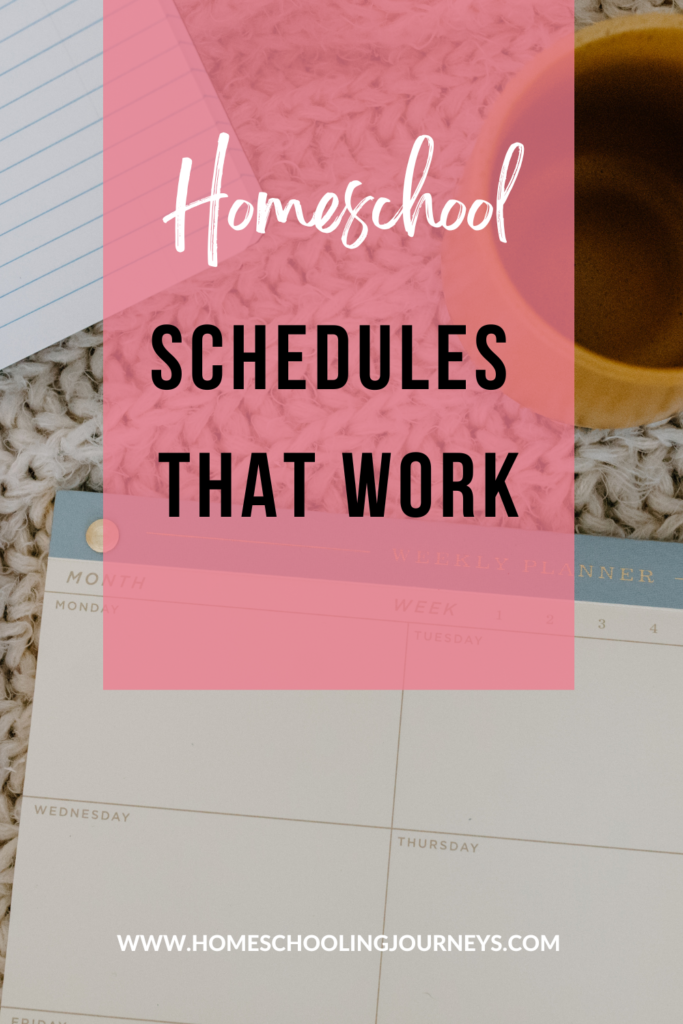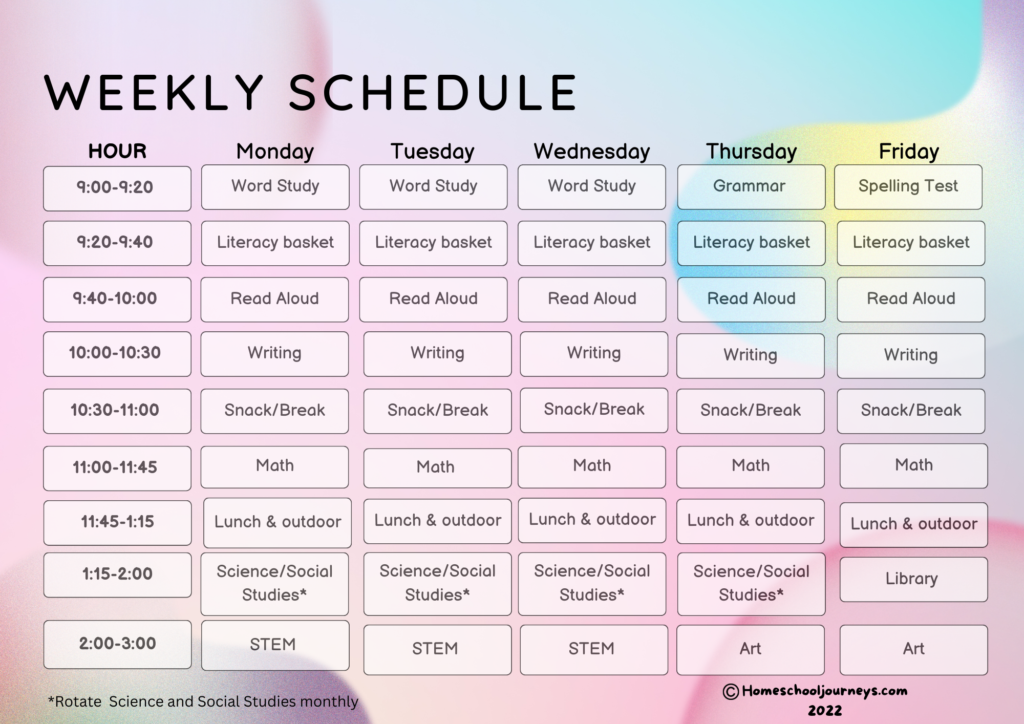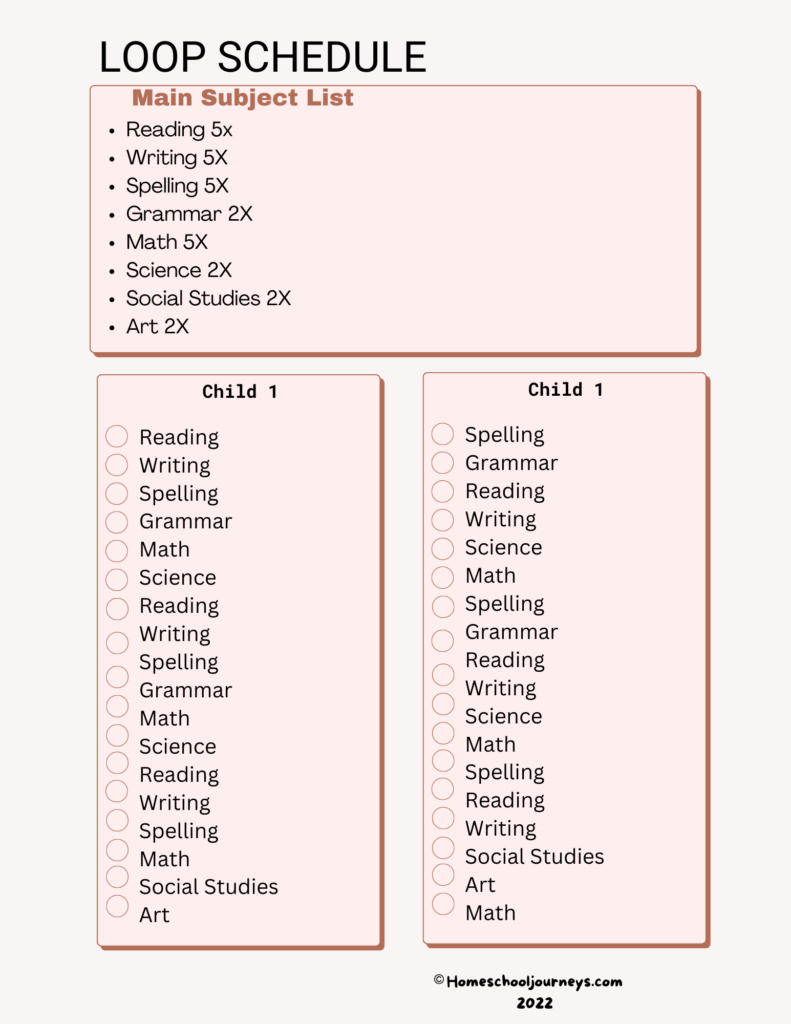This post may contain affiliate links. If you click on one of my affiliate links and make a purchase, I may receive a commission for referring you. This in no way affects your price. Please know that I only recommend resources and items I believe in and highly recommend. You can read my full disclosure statement here.
Organizing and planning for a homeschooling day can be stressful and chaotic. If you are finding it difficult to keep up with the curriculum then these homeschool schedules that work will help take the overwhelm away.

Do you want to homeschool your kids but are not sure how to structure their day? If so, you’re not alone.
Homeschooling is an increasingly popular option for families who want to give their children the best education possible. But knowing where and how to start can be intimidating.
To help make it easier, here’s a look at some sample homeschooling schedules that can provide guidance in developing a plan that works best for your family. From traditional classroom-style timetables to flexible daily agendas, these sample plans can offer ideas and inspiration as you get started on this exciting journey of homeschooling your kids!
Homeschool Schedules That Work
Homeschooling can be a wonderful experience for both parents and children alike. It’s important to have an efficient schedule in place to ensure that learning is effective and fun. The following sample homeschooling schedules will help you decide which structure is best for your children. By using these schedules, you can ensure that all subjects are covered and have an idea of how the day should flow.
4 Types Of Homeschool Schedules
Every family’s schedule varies, so there is no one-size-fits-all homeschool schedule. Scheduling your child’s weekly study does not need to mimic a school schedule. Your child’s school day will be shorter than the school system due to many factors. Such as in school there are more students in the class and there are more interruptions due to assemblies.
1. Block Schedule
If you are one that likes devoted time to a specific subject then this schedule is for you. Block scheduling means that subjects start and end at a specific time. These schedules tend to be what the school system allows. You may find it difficult to follow these schedules if you are teaching children of multiple ages and different subjects. Below is an example of a grade 2 block schedule.

2. The Relaxed Schedule
The relaxed schedule is perfect if you prefer more freedom and don’t like a rigorous structured day. These schedules are more like a daily list of subjects to be done during the day. A schedule like this allows your child to spend more or less time on a subject depending on whether he or she needs additional practice or not.
3. The Loop Schedule
The loop schedule is even more relaxed and is perfect for families that homeschool multiple-age children at the same time. When creating a loop schedule, you first need to decide which subjects and how often you will teach them. Next, create a daily list for each child based on the subjects they will be studying. If you are homeschooling different ages children then just rearrange the subjects in a different order for each child.

4. Checklist
The checklists are a combination of the loop schedule and the relaxed schedule. The checklist is similar to a daily to-do list and is intended more for older kids. Each day you create a list of all the subjects that need to be covered for that day, and the child determines the order.
Homeschooling requires flexibility and creativity. It may take some trial and error to find the right schedule that fits your family. Feel free to mix and match elements of these homeschool schedules that work to suit your lifestyle and needs.

Leave a Reply